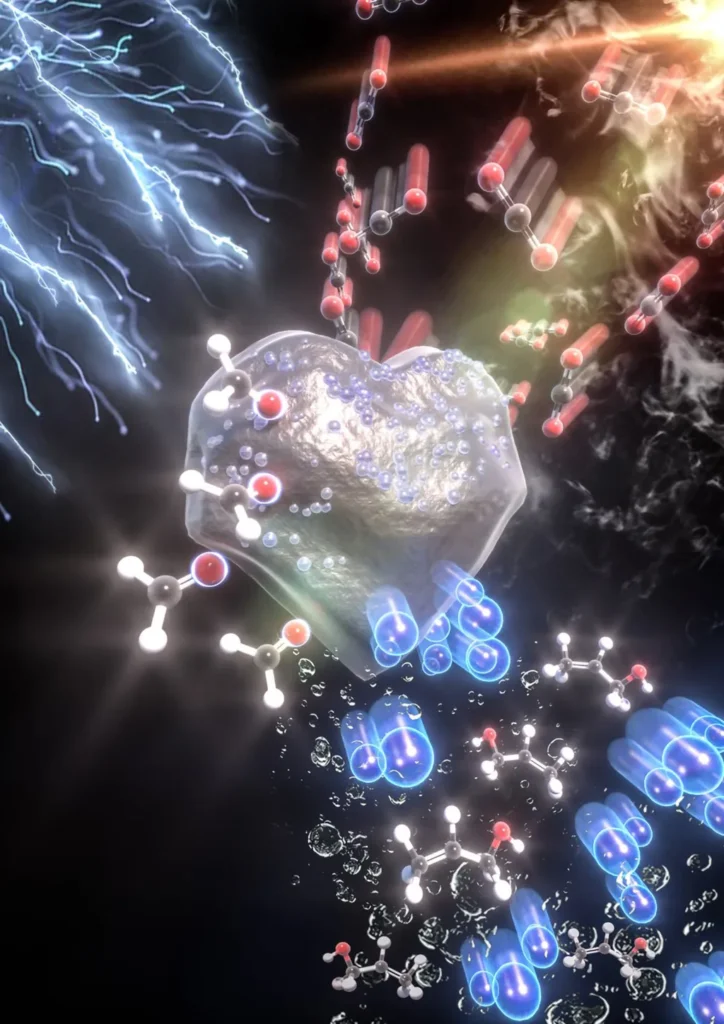In the heart of Seoul, South Korea, a team of researchers led by Toshali Bhoyar at Korea University is tackling one of the most pressing challenges of our time: turning carbon dioxide (CO₂) and carbon monoxide (CO) into valuable chemicals, specifically propanol, using a process called electrocatalysis. Their work, recently published in the journal *Materials Futures* (translated as *Materials Futures*), offers a glimpse into a future where industrial emissions could be transformed into profitable resources, potentially revolutionizing the energy sector.
The global energy demand is rising, and so are carbon emissions. Traditional methods of producing chemicals like propanol are often energy-intensive and costly. Bhoyar and her team are exploring an alternative approach: using electricity to drive a chemical reaction that converts CO₂ and CO into propanol. This process, known as electrocatalytic CO₂/CO reduction, could offer a more sustainable and cost-effective solution.
However, the journey is not without its hurdles. “The main challenges are substantial thermodynamic barriers, low Faraday efficiency, poor energy efficiency, and complex coupling mechanisms between C₁ and C₂ active intermediates,” Bhoyar explains. In simpler terms, the process isn’t very efficient yet, and the researchers are still figuring out how to make it work better.
The team’s review, published in *Materials Futures*, provides a comprehensive overview of the latest advancements in catalyst design, reaction conditions, and electrode-electrolyte interface chemistry for CO₂/CO reduction to propanol. They’ve examined a broad range of catalyst substrates, looking for clues on how to improve the process.
So, what does this mean for the energy sector? If researchers can overcome these challenges, electrocatalytic CO₂/CO reduction could become a game-changer. It would allow industries to turn their emissions into valuable chemicals, reducing their environmental impact while also creating new revenue streams. Moreover, it could help mitigate the global energy crisis by providing a sustainable source of valuable chemicals.
As Bhoyar puts it, “A deeper understanding of the CO₂/CO-to-propanol conversion mechanism and the characteristics of effective catalysts is crucial.” This research is a significant step towards that understanding, offering valuable insights into the emerging field of electrocatalysis.
The road ahead is long, but the potential rewards are immense. As the world grapples with the dual challenges of climate change and energy demand, research like this offers a beacon of hope. It’s a testament to human ingenuity and our relentless pursuit of sustainable solutions. The future of the energy sector may well hinge on our ability to turn carbon emissions into resources, and this research is a significant stride in that direction.

